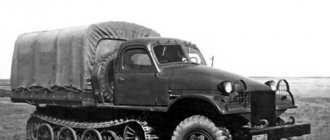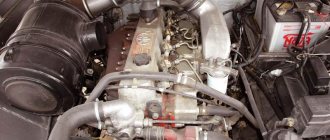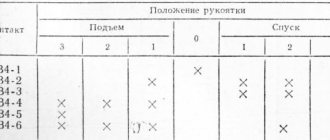Home Brands FAW FAW 1041
The FAW 1041 light-duty truck adequately represents the class of commercial vehicles on the domestic market. This hard worker from China is loved by many drivers due to its endurance and unpretentiousness - it adapts equally well to the rhythm of the city and to long-distance trips. It is also valued for its maintainability and efficiency. If you want to enlist the support of a tireless worker, then you won’t find a better model in the budget segment.
Design and versions
The car is designed for work only. This is proven by its unusual appearance for the domestic car market. Unobtrusive design, angular shapes, lack of pronounced exterior details - many drivers will call the model outdated. The principle of glazing is even more confusing - when you are in the cabin, you get the impression that you are in an aquarium. However, everything in this car is thought out.
The large glass area creates an excellent panoramic view of more than 180 degrees, which helps to navigate in dense city traffic. The narrow radiator grille is placed so well that there is no need to worry about poor engine cooling. The rectangular bumper with rounded edges houses equally discreet fog lights. The optics, despite their simple appearance, provide excellent illumination at dusk and at night, without blinding other motorists.
On the domestic market, FAW CA 1041 is presented in three versions:
- The L-3 has a standard all-metal cab with two seats for the driver and passenger;
- L2-3 has an extended base for transporting large cargo;
- In addition to the extended base, the L2R5-3 has an unusual cabin - it is equipped with a berth, which makes it suitable for long trips.
In all versions, the vehicle's cabin is equipped with wide door openings, as well as a convenient folding mechanism that easily allows access to the engine. Together, we have a compact car that is comfortable for transporting goods.
Load capacity
To transport cargo (depending on the version of the truck), different versions of the body can be installed. One of them is an all-metal platform with folding sides, which allows you to move long loads. To transport perishable products, you should install an isothermal van, which will protect the products from adverse climatic and weather conditions. If the cargo simply needs to be hidden from prying eyes or protected only from rain, then you will need a frame installed to equip the truck with an awning.
Body type does not affect the vehicle's carrying capacity in any way. Models L-3 and L2-3 are capable of transporting loads weighing up to 1320 kg. The version with an extended wheelbase copes with a slightly lower weight - 1280 kg. However, the large safety margin of the FAW 1041 chassis allows periodic overloads of up to 2 tons, especially with short transportation distances. But you should not abuse the capabilities of the machine.
Load capacity, overall dimensions
In Russia, sales of this light truck model began in 2005. In the same year, a plant came into operation in Biysk (Altai Territory), which assembled the 1041 machine on Russian territory.
For our conditions it turned out to be a successful car.
With a total length of less than six meters, the standard body length is 3.4 meters. That is, a car with the dimensions of a large passenger car, which is noticeable even in the photo, can easily transport a fairly heavy load.
That is why the FAW 1041 with its good technical characteristics was liked by the owners of private companies that are engaged in daily transportation of goods.
In the basic modification it has the following characteristics:
- machine length width - 1.8 meters, height along the awning - 2.15 meters;
- the carrying capacity in this version is 1.3-1.5 tons;
- wheelbase - 2.85 meters, front wheel track - 1.414 meters;
- ground clearance - 180 mm;
- distributed weight with full load - on the front axle - 1.52 tons, on the rear axle - 2.53 tons;
- distributed weight without load - on the front axle - 1.26 t, on the rear axle - 0.917 t;
- seats in the cabin - two;
- cab type - cabover, tilting, with two doors and one row of seats;
- the frame is powerful, stamped and riveted, trapezoidal;
- front suspension is dependent - multi-layer springs and a double-acting shock absorber;
- rear dependent suspension - axle and springs;
- front axle - forged I-beam;
- rear axle - stamped and welded crankcase with a fully unloaded axle shaft;
- braking system - dual-circuit, hydraulic, drum brakes;
- electrical equipment with a 12 V mains voltage, a 120 ampere-hour battery, a one-piece 500 W generator and a starter with electromagnetic activation.
Did you know that the presence of an on-board computer in the cockpit of the Baw Fenix 33462 allows you to effectively control the operation of all vehicle devices. In this article you can read information about the technical characteristics of the KamAZ-65116 truck tractor.
On this base they collect:
- trucks with curtains;
- three types of vans - manufactured goods, insulated and isothermal.
Salon
The interior features the same minimalism as the exterior. By removing all unnecessary parts from the cabin, Chinese engineers were able to increase the space above the head and in the legs. For finishing, medium-hard plastic was used, which some car enthusiasts call “wood-plastic.” The entire interior is done in soothing colors. Beige and gray predominate, with textural brown found here and there.
Many will be disappointed by the appearance of the front panel. It seems that it came to us straight from the 90s - it is so sparse in details. But conveniently placed controls allow you to ignore the interior and enjoy comfortable control. The dashboard with bright colors contrasts with the general background in an original way.
The cabin is equipped with a reliable heating system that warms you in the most severe cold. A spacious glove compartment keeps documentation in order, and a number of small niches allow you to keep small items at hand. The only thing that is not at all pleasing is the shape of the seats. Despite the soft fabric upholstery, they are not suitable for a long journey.
Cabin
There is no quality inside, everything is done to reduce the price tag, so hard plastic and fabric covering materials are used here. There is little free space inside the CA 1031, only three seats. The seats are simple, the driver's seat is adjustable in length and backrest angle.
The two-spoke steering column is partly made of wood. The steering wheel cannot be adjusted - this is a minus (adjustment appeared later). The instrument panel is represented by large dial gauges with indicators of malfunctions of various components.
The center console of FAW CA 1031 is trimmed with wood-like plastic. At the top there is a standard cassette player without a radio. Below there are many buttons and plugs for installing the air conditioner. The stove is adjusted with classic clumsy knobs.
The gear selector is made of wood.
Engine and transmission
| Engine model | CA4D32-09 |
| Engine displacement | 3168 cm³ |
| Number of cylinders | 4 rows |
| Number of valves | 8 |
| Maximum power | 90 hp at 3400 rpm |
| Maximum torque | 210 H*m at 2100 rpm |
| Fuel | Diesel |
| Environmental class | Euro 3 |
| Transmission | Mechanical CAS5 |
| Number of gears | 5 |
| Maximum speed | 100 km/h |
| Fuel consumption | 10 l |
| Volume of the tank | 70 l |
The heart of the car is a 4-cylinder in-line diesel engine. Its displacement is 3.17 liters, power is 90 hp. The upper limit of torque of 245 Nm is reached already at 1900 rpm, when the maximum number of rotations per minute is 3200 rpm.
The power plant is equipped with turbocharging and a liquid cooling system. The latter requires a separate word, because it was executed very successfully. Its wide flow channels prevent the motor from overheating and allow it to be operated at its maximum without any consequences.
The force from the engine is transmitted to the rear axle by a 5-speed synchronized manual transmission of the CAS5 model. It is equipped with a single-plate dry clutch with hydraulic drive.
Russian Japanese from China Truck FAW CA1041 K26L-II
K. Ushanov, photo by the author and M. Shelepenkov
For the last two years, the certification of new cars at the Dmitrovsky Automotive Test Site has been in full swing, and most of the cars are from China.
This trend could not help but affect our tests. (Tests of JAC trucks: JAC HFC 4181 KR1 4x2 (“GP” No. 6, 2006) JAC HFC 1061K (“GP” No. 9, 2005) JAC HFC 1083K (“GP” No. 12, 2005) This time our test subject was the FAW CA1041 K26L-II semi-truck produced by First Automotive Works, which is one of the largest automobile manufacturers in China. The
Chinese auto giant's semi-truck in appearance is nothing more than the Isuzu Elf series NHR69E. Such cars began to be produced in Japan since 1993, so the Chinese version can even be called a “fresh" car. However, the truck can also be called a third Russian, since the van was already installed in Russia. Although in this case I was more interested in the car itself than its superstructure.
Chinese semi-truck with an “aquarium”
The FAW cabin is identical to the Isuzu not only externally, but also internally. The design and location of the sensors on the instrument cluster are the same. The transmission and chassis are also entirely manufactured at factories in the Middle Kingdom.
By the way, I really liked the cabin. It is designed for three people. The passenger seat seats two people and has no adjustments. The driver's seat is separate, adjustable in the longitudinal plane and in the angle of the backrest. The steering column is tilt adjustable. The cabin doors open to a very large angle, and the opening cannot be called small. There is a step at the bottom of the opening, and a handrail is attached to the front windshield pillar. Given my corpulent build, it was not difficult for me to fit into the workplace. The ergonomics, designed by the Japanese, are very good, since they take into account the anthropometric parameters of drivers from different continents - the donor Elf was, after all, created for sales all over the world. Due to the large glass area in the cabin, there is good visibility and it gives the impression that you are inside an aquarium. Unfortunately, due to the large van, visibility to the outside mirrors was impaired. Apparently, with such a superstructure as on the tested FAW, it is necessary to lengthen the mirror rods.
| There is another funny “glove compartment” on the instrument panel |
The finishing material inside the cabin is very similar to the early examples of Moskvich-2141, which were head and shoulders above the later Svyatogorov - inexpensive ivory-colored plastic. But the instrument panel is trimmed with walnut-like plastic. It has already been noted that Japanese, South Korean, and now Chinese trucks have a chic dashboard inlaid with some type of wood, and mostly walnut for some reason: warm shades create comfort and are reminiscent of the interiors of SUVs and minivans. The instrument panel of the Chinese truck has good functionality, starting with the switches and ending with the radio, an extraordinary “glove compartment” on the console and holders for bottles or glasses. (Vehicles with such a panel will no longer be supplied; batches of trucks with an improved panel are already arriving.)
The instrument cluster is very simple, but contains all the necessary information for the driver. The only thing missing is a tachometer. Instead there is the FAW emblem. Apparently, so that the driver does not forget what kind of car he is driving. But under the speedometer there is an LCD mini-display informing the driver about the daily and total mileage of the car. In addition to the main glove compartment, there are also many hatches on the instrument panel. For example, at the left end of the panel there is a filler neck for the brake fluid reservoir. It closes neatly with a lid. Under the main glove compartment there is another hatch that hides the windshield washer fluid reservoir and the cabin heater fan. A separate hatch is provided for the fuse box.
The interior door panels are replete with handrails, they are firmly secured - you can’t tear them off, although there are no complaints about their location, as well as the placement of handles and door handles.
| Easiest truck windshield service in our testing |
The pedal assembly is simple in appearance, but very convenient. The angle of the fuel pedal is adjusted with a simple nut, which is good news. The location of the brake and clutch pedals is convenient - my legs did not get tired during many kilometers of testing. For the convenience of the driver, there is also a rest for the left foot, because the clutch pedal is not used all the time.
But most of all I am delighted with the steering wheel! Small in diameter, comfortable in thickness of the rim, trimmed in leather and does not obstruct the instrument cluster at all, no matter how tall the driver is.
Purpose and purpose
In order to get to the engine, the cabin must be carefully lifted (or carelessly tilted, as you like). There is no hydraulic lift, as on some KamAZ trucks, nor is there an automatic lock. There is a lock handle, but the lock itself is a whole system. Even if I open the lock with the handle, this does not mean that the cabin can be raised. I need to use a special rod to open the latch, and only after that, straining all my muscles, I tilt the cabin. It turns out like this: the lever only opens the lock, and the latch serves as a fuse against self-opening of the cabin. The cabin lifting unit is tight, therefore, even in the tilted state, the cabin can be returned to its original place only by performing certain manipulations. The stop that holds it open is so reliable that it is difficult to remove it from the fuse with your hands. It took me 5...7 minutes to pull off the “pawl” of the stop - it was difficult to do without skill.
| The cabin has a double lock |
When the cab is tilted, the tilt angle is quite enough to service the engine, power steering, clutch, and gearbox. It immediately turns out that the gearbox drive is cable driven. The Japanese-Chinese diesel itself has a displacement of 3.2 liters and a power of 90 hp. with turbocharging is located under the cabin very compactly. Getting to the turbocharger, fuel injection pump, starter, generator, etc. is also no problem. All filler necks are accessible, from which we can make a preliminary conclusion that the engine is suitable for maintenance and repair.
The cardan drive is not reinforced and is very similar to the GAZel. But there is one advantage of the Chinese semi-truck drive - the safety clamp is located in the middle of the driveshaft. Many experts assess such a device as unnecessary. This device looks ridiculous, but it seems justified to me. In my practice, there have been cases of destruction of crosspieces while driving: the madness of a torn cardan is simply frightening - the car shakes from powerful blows, and if the breakage occurs along the flange of the secondary shaft of the gearbox, then the nearest cars or people will be in trouble. Add to this good speed. So such a clamp under the driveshaft is justified in terms of safety.
The rear spring mounting is typical for mid-class trucks, only the spring is mounted upwards rather than downwards. Of course, this is unusual for us, since this design is not very common. The advantages of such a fastening scheme are not entirely clear, but, in all likelihood, they pursue one goal - to protect the threaded connection from damage by stones and destructive effects.
A Russian-made van is installed on the chassis. The fastening of the closed body is nothing remarkable, but the ladder leading to the van is interesting.
Firstly, it stows away under the bottom of the van. This is a positive thing.
| The tilted cab allows access to the engine |
Secondly, if you climb inside the van, you need to rest your hands on the floor, since there is no handrail. And this is already a negative factor.
Thirdly, the retracted ladder is locked with a hook-type holder. But while moving, this hook goes down, and the ladder tries to jump out of its niche due to vibration and lowers into working condition. This has happened several times on our van. The large volume of the body compensates for the inconvenience.
But, as it turned out, I was happy early. If the chassis weighs 2180 kg in running order according to the technical specifications, then together with the van the curb weight will increase to 2760 kg. And the rated gross weight is 3520 kg, i.e. it turns out that the carrying capacity of the FAW together with the van is only 760 kg? The technical specifications state: the load capacity of the Chinese truck is 1320 kg. Where does 560 kg go? They are just “eaten up” by the van. A little over half a ton. Is there really no other, lighter material from which the body of the van could be made? And the loss of capacity for FAW is significant, and I doubt any carrier will care. This suggests that the FAW CA1041 K26L-II is best used for small-batch deliveries of lightweight cargo (including assembled furniture, ready-made clothing, tall flower seedlings, etc.).
Movement and Control
Driving out on the test roads, I once again positively assessed the location of the gearshift lever. It is installed very conveniently - on a special console next to the driver’s seat, almost like a joystick. You don’t have to reach for it, and nothing gets in the way. Despite the cable drive, the gears were engaged precisely and smoothly. Since the truck and gearbox were originally Japanese, the Chinese experts did not change the gear shift (the shift pattern was “mirror-shaped”) - a little unusual for a left-hand drive, but you can quickly get used to the “wrong” Japanese pattern.
| We carried out careful measurements of the van, the dimensions of which are almost the same as those of the GAZelle. |
Unlike previous Chinese trucks that I had the opportunity to test, the semi-truck turned out to be quite soft. Most likely, the weight of the van affected the load on the chassis. Nevertheless, it performed well on the straight section of the dyno road. What I liked most was the operation of the fuel pedal. It works smoothly, without delay, and responds very sensitively to driver commands. With such a pedal it was easy to keep the car at a constant speed. Even the needle on the speedometer did not waver, and this was observed both in the equipped car and in the one loaded with ballast.
The braking system also performed well. Its design is quite archaic. All wheel brakes are drum type; there is no ABS, but it is effective on dry asphalt. The issue of winter operation remains unresolved, but in any case, much depends on the type of tires installed. The most important thing is that the hydraulics work well and the brake pedal is comfortable.
With maneuverability, everything was fine: the car obeys the steering wheel perfectly, the steering mechanism works flawlessly, and on a road 6 meters wide the car turned around in one go. But there was a problem with stability - the van was high, and accordingly the center of gravity rose. Therefore, I had to be careful on the turning rings. The car was tilting like a yacht and, for fear of capsizing the van, we had to slow down.
As for the direct measurements of fuel consumption and speed properties of the Chinese lorry, the test results turned out to be predictable. At constant speeds in the range of 50...70 km, the engine consumed from 8 to 11 l/100 km, both in running order and laden. However, in the urban cycle, the spread of fuel consumption depending on weight differed by a couple of liters. I believe the fuel economy would be better if the van had a fairing.
Special opinion
| FAW has a solid front beam, but crankcase protection would be nice |
To understand what the FAW 1041 car is like, it is best to compare it with our popular GAZelle. Then all the advantages and disadvantages of this car are immediately visible. Externally, the FAW 1041 is prettier and more compact than the GAZelle. The cabin of the “Chinese” is located much lower, making the landing more comfortable. On the “Chinese”, access to the engine is also freer - after tilting the cab, it is in full view. But in the cabin, although there are the same three seats as in the GAZelle, the cabin itself is narrower, which means there is much less free space. But visibility is better due to the large windshield and large windows in the doors. The controls on the FAW are more conveniently located. For example, the short gearbox control lever is located right next to the seat and has short shift strokes. The FAW's standard equipment for the driver is also impressive: a leather steering rim, a radio, an instrument panel with retractable cup holders and wood-look trim. On the GAZelle in its basic version, one can only dream about this for now.
When driving, the Chinese car is noisier and less dynamic than the GAZelle, but it is more nimble (the wheelbase is shorter, and the steering wheels turn at a larger angle). The loading heights of the vans are the same, and the interior dimensions are also comparable. But you can load the FAW without fear: there are powerful springs and tires designed for heavy loads. A diesel engine will always allow you to carry it away, albeit slowly, especially since the resource of the power unit should be large.
At the same time, with many “pros”, the FAW 1041 also has obvious “cons”: the build quality and finishing materials are not exemplary. GAZelle is still doing better with this. The GAZelle with a half-hood layout looks clearly safer than the flat-faced FAW. Well, GAZelle’s main trump card – low price – still remains in force. Although the Chinese van costs much less than most similar vans, it is not yet able to compete with the GAZelle in price. It's a pity. Personally, I really liked the Chinese FAW 1041 as a city delivery van.
| Power steering fluid pump and reservoir |
Why didn't FAW become ZIL?
The test group's interest in the CA1041 K26L2-II truck taken for testing was not without reason. Last year, a message was circulated about the possible start of production of FAW trucks at the facilities of AMO ZIL. The cooperation protocol signed in the spring of 2005 implied the adaptation to Russian operating conditions of four FAW models - two light-duty trucks and two small buses, as well as the equipping of the company's own Bychok trucks with FAW engines. However, this year the project was closed.
The stumbling block was the testing of a two-ton car CA1041 K26L2-II, which did not meet Russian requirements on the 21st point. There was a false impression that the Chinese car was “raw”. In fact, problems arose at the homologation stage - bringing characteristics and consumer properties to national requirements and regulations.
FAW CA1041 cars have been imported into Russia since May 2005 in two types - chassis and flatbed. The trucks have OTTS (vehicle type approval), and the parties to the deal believed that this was enough. At the same time, it was lost sight of that Irito imports trucks for sale in Russia and receives certificates using a simplified procedure (for limited quantities of up to 150 cars and 100 trucks). This is a normal phenomenon - many Russian manufacturers of special equipment obtain OTTS in this way. In 2005, sales of all FAW light commercial vehicles amounted to 434 units, which corresponds to 4% of the Russian market in this segment among foreign cars. In order not to break the law, but to increase sales, Irito has two ways: to increase sales through a larger number of modifications, sequentially receiving a new OTTS for each type, or to homologate the reference models according to a strict procedural scheme and start selling en masse. I liked the last option better.
From these positions, it was decided to enter into an agreement with AMO ZIL: first to import trucks, then adapt them for the domestic market and master production in industrial quantities. And this is no longer 150 trucks! This is an order of magnitude greater. Here the OTTS regulations are becoming stricter. A precedent arose during testing.
| A kind of safety clamp for the driveshaft and at the same time protection for the muffler |
The simplified procedure for issuing OTTS implies the acceptance of test results conducted by the manufacturer itself in its laboratories based on its own methods, which meet the requirements of other countries (USA, Japan), but differ from Russian ones. Such certification involves climatic, resource tests, maintainability, and such changes cannot be corrected at once, and implies large long-term research and investments in R&D. This is where the “silent scene” arises - from whose pocket is this pleasure paid for and who will then skim the foam from the market? Such issues cannot be resolved at the end of the day. The quarrel between GM and AvtoVAZ over the division of income from joint production is still fresh in memory, and neither the management of FAW, nor the distributors of Irito, nor the management of AMO ZIL want to step on the same rake.
Similar precedents with inconsistencies have been encountered many times. For example, the homologation of some “Europeans” was carried out in 1993–1994. showed that they do not meet Russian requirements in terms of visibility, ergonomics and “acclimatization”. The reason lay in different priorities: in Europe, for safety and protection of the cabin space, the pillars are supposed to be made thicker, the suspension is stiffer for stability, and in order to meet the requirements for passive and active safety, some controls must be located in other places.
The editors thank you for the car provided for testing. Tel.: +7(495) 956-6060
Suspension, steering system and brakes
The suspension is dependent and is represented by semi-elliptic springs. To soften shocks when overcoming uneven surfaces, it is equipped with telescopic hydraulic shock absorbers.
The steering mechanism of the FAW 1041 is equipped with a standard hydraulic booster. With its help, the steering wheel rotates effortlessly, and the turning circle is only 11.8 and 15.2 m for the standard and extended versions, respectively.
A dual-circuit system with ABS is responsible for braking. A drum mechanism equipped with a vacuum booster and hydraulic drive is directly responsible for stopping. A car loaded and accelerated to 60 km/h has a braking distance of 36.7 m. The handbrake has a standard cable drive and operates by acting on the transmission elements.
Price
A brand new truck costs 800 rubles. For such a large number of advantages, the price is small. But we will have to disappoint you, because the models are no longer supplied to the domestic car market - you will have to purchase the FAV 1041 directly from the assembly line in China.
The price of used vehicles depends on the year of manufacture. So for models produced in 2008-2009 you will have to pay about 300-400 rubles. Representatives from 2012-2013 will cost 500-550 rubles. An alternative is to try renting a truck. In this case, its price will be only 2,000 rubles per hour.
A small-tonnage truck will become an indispensable assistant for you in moving goods, both within the city and beyond. With careful handling, the car will faithfully serve for 10-12 years, and available spare parts will extend its life for several more years. If you need a conscientious worker, then the FAW CA1041 will be the best choice for you.
Price CA 1031
Sales have been completely stopped, so you can only buy it on the used market. The average price tag is 300,000 rubles, it all depends on the condition. The price is low, which is why there are so many sales on the Russian market.
In the database the car was equipped with:
- radio;
- stove;
- fabric covering;
- adjustable seat;
- PTF.
The equipment differed depending on the year of manufacture. In some versions of the FAW 1031, power steering was included in the base, but recently it has become an option. An awning, gates for the awning, and battery protection are also installed for a fee.







